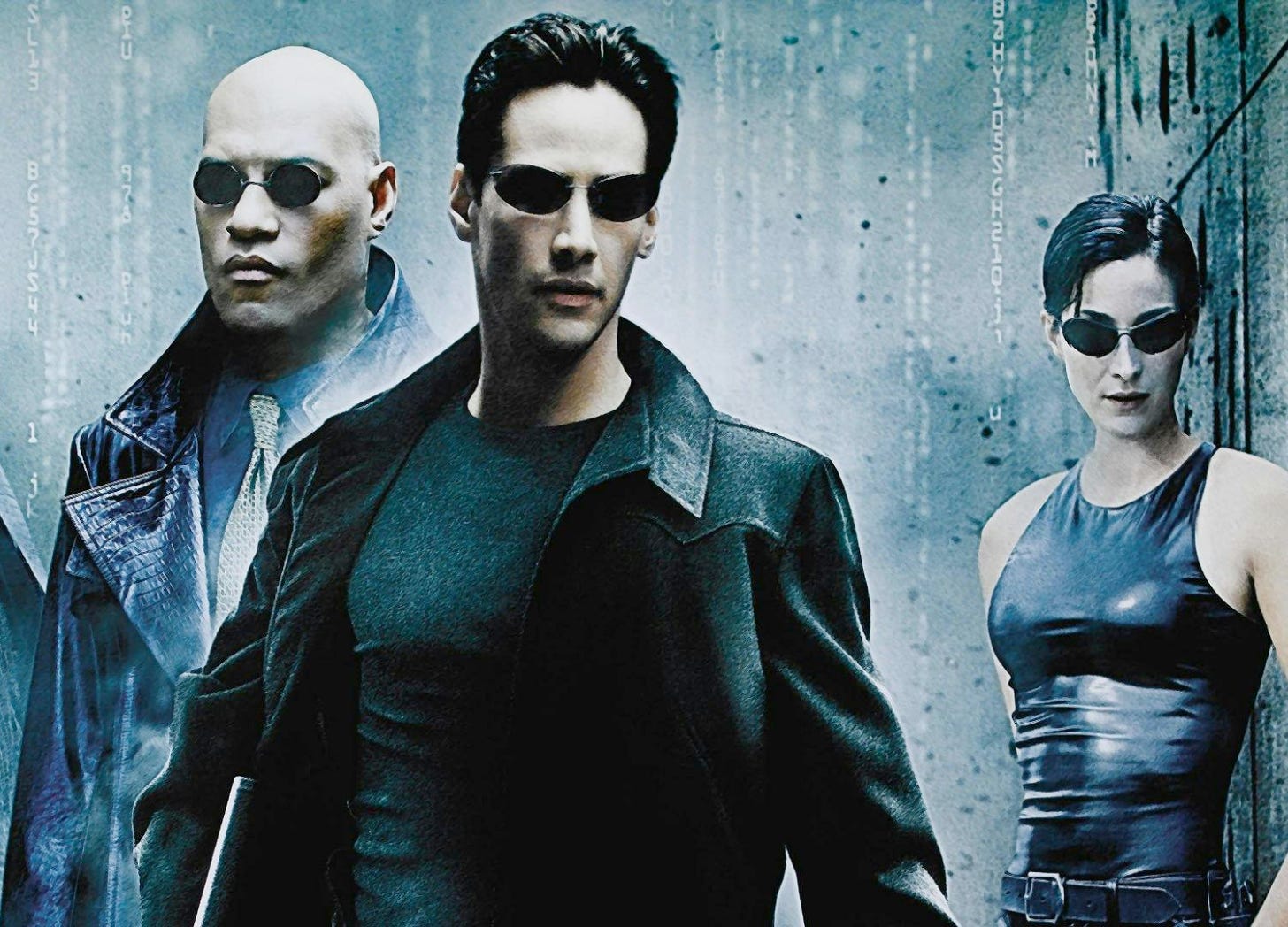Simulation Trope: When reality isn't real
Aug 08, 2025
Have you ever toyed with the idea of putting the ultimate plot twist at the end of your story and asking, “What if it turns out it was all a dream?” Or, “What if it turns out this is all just a simulation?”
And let’s be honest, this idea initially sounds pretty lame. That is until you remember the films and novels that have actually used it really well.
Can you think of any? Let me know in the comments below!
Today, I want to dive into the simulation trope and see what makes the difference between a disappointing and a successful implementation of it.
If you enjoy reading, continue below. But if you’re not in the mood for it, I have some exciting news: you can also catch the whole deal over here ↓
https://www.youtube.com/watch?v=nn_oVV8YCg0&t=468s
Please note:
The post below contains spoilers for the films The Matrix (1999), Source Code (2011), and Don’t Worry Darling (2022).
(Was this announcement in itself a spoiler? A bit. Oh well.)
Defining the “simulation trope”
There are many ways to blur the lines between reality and non-reality within the context of a story. This may be implemented through hallucinations, dreams, magical realism techniques, and other tools.
Sometimes, this fictional non-reality can serve as a metaphor for a character’s inner experience (Pan’s Labyrinth, Nocturnal Animals, The Midnight Club) or as a fun quip to connect the frame story to the main story , where it turns out it might not be so fictional after all (The Princess Bride, A Cinderella Story). But today, I want to focus specifically on simulation trope stories.
By simulation trope, I am referring to a story in which characters discover that their perceived reality is actually an artificial simulation created for a specific purpose.
Unlike dreams, hallucinations, or stories within stories, the simulation is an intentional and observable construct within the fictional reality. Some examples of this include The Matrix (1999), Source Code (2011), The Game (1997), The Truman Show (1998) and Don’t Worry Darling (2022).
But even though we’re focusing specifically on the simulation trope, I believe the principles also apply to many other tropes. So even if you’re not particularly interested in the simulation trope itself, you still might find the post insightful. (Let me know if that’s the case!)

Principle 1: Level up
The first principle that applies to successful simulation stories is the reminder to keep up-levelling your story and raising the stakes.
When you reveal that what we have seen so far in the story is not real in the context of its fictional world, the audience can immediately feel cheated and tricked.
Which makes perfect sense!
Imagine following the journey of a character, getting interested and at least somewhat emotionally invested in what happens, only to learn it has all been an illusion. And it’s not the one the audience agreed to when they trusted you to guide them on this journey.
By revealing “it’s all been fake”, you tell the audience that what they’ve seen so far doesn’t really matter and they cared about it for no reason.
Unless: you upgrade the story and raise the stakes.
Unless you show the audience that everything that happens in the simulation indeed matters. In fact, it matters even more than we thought!
You don’t need to get too dramatic. It’s really just about adding meaning to the simulation and showing why it matters to the world and the characters.
Be aware that by revealing something as fake, you have taken away a layer of the emotional investment for the audience. It is your job to fill that void with a new, even better meaning.
Only take away meanings if you can add new, deeper ones.
It’s the difference between
-
“You thought that was important? Haha, you sucker!” and,
-
“You thought that was important? Wait until you hear the truth - there is something much more significant at stake.”
Always remember your job is not to trick the audience and leave them high and dry. It is to create an experience for them - so that even if they temporarily get the feeling of being tricked, they still trust you to show them it was with a purpose.
Examples
The Matrix (1999)

Probably the most obvious and known simulation story, this iconic movie had such an effect on our society that we tend to forget just how much vocabulary and internet memery has been influenced by it.
Given how well-known it is, it might be difficult to imagine (or remember) watching the movie without knowing anything about the story.
At the beginning, it looks like your typical hacker action thriller. Pretty soon we start to notice some weird stuff going on and eventually, we exit the matrix and learn about the true reality together with Neo.
In The Matrix, the revelation that the world is a simulation doesn’t diminish the story’s significance; it amplifies it. It turns out we’re not just following some hacker dude; what is at stake is the entire future of humankind and the nature of reality as we know it.
Source Code (2011)

Similarly to The Matrix, when you start watching Source Code, you may think you’re watching a basic action film on a train. But that expectation is quickly up-levelled with the revelation that Stevens, the main character, is actually reliving the final eight minutes of someone else’s life in a simulated reality. This shift completely changes how we view him and the other characters on the train.
We learn that by finding the bomber inside the memory/simulation, Stevens can assist in the prevention of further attacks planned by the same guy in reality. This, in combination with seeing Stevens’ torso in real life, puts the simulation in a broader context and gives it a deeper meaning and dimension.
Moreover, in the end, the simulation turns out to be a construct of Stevens’ mind and even presents the possibility of alternate timelines. Talk about an upgrade!
Don’t Worry Darling (2022)

This is another great example of implementing the principle of giving meaning to the simulation. In Don’t Worry Darling, we follow Alice as she uncovers the reality of the world she lives in.
This time, the revelation that it’s all a simulation puts into focus relationships between people, especially the relationship between Alice and her husband. It explores the mechanisms of mass delusions and brings out themes of autonomy, control, and gender dynamics.
Even though we discover the true reality at the very end, we realise that this world is not as it seems pretty early on.
Which brings me to the next principle.
Principle 2: No last-minute reveals, please
You may have noticed that all the examples mentioned above reveal there is something off with the perceived world fairly early in the story.
Which is what I highly recommend if you’re writing a simulation story: Don’t leave it up to the last minute.
Mainly because the longer you string the audience along, the bigger the feeling of being cheated and tricked will be - and with it, the bigger your task to fill that void. But at the end of the story, you don’t usually have much time and space to really level up the meanings.1
Revealing the simulation early gives you the opportunity to upgrade the story and play with it, like in The Matrix and Source Code.
On the other hand, hinting at something weird going on without revealing everything allows the audience to explore that together with the character, like in Don’t Worry Darling.
In any case, creating suspicion about the nature of reality before you reveal the true reality is essential.
This is how you set up the reveal and ensure coherence and consistency in your world-building and your plot.
Other examples
In today’s post, I wanted to focus on stories in which the audience is initially unaware that what they’re witnessing is not true reality.
But there are plenty more stories that introduce the concept of fake reality at the very beginning and still play with the principles we talked about. A great example of this would be The Truman Show (1998). But we’ll leave the discussion about those for some other day.
Not to mention all other types of movies that play with the relationship between fictional reality and non-reality.
So much material to talk about in the future!2 I’m already excited about it.
Then again, please know this is just a principle I am observing about how stories usually work. Individual cases might be different and hey, as long as you are aware of this potential pitfall, your story might just need that last-minute reveal, who knows. Listen to yourself and your gut. Always.
Did you notice I went a whole post about fake reality without mentioning Inception? Quite an achievement.
Wait… the footnotes don’t count, okay?
Join the Writing Studio newsletter
Letters on craft, creativity, and the writing life. You can expect writing tips, advice, exercises, reflections, and insights about creative life.
Straight from my desk to your inbox.
